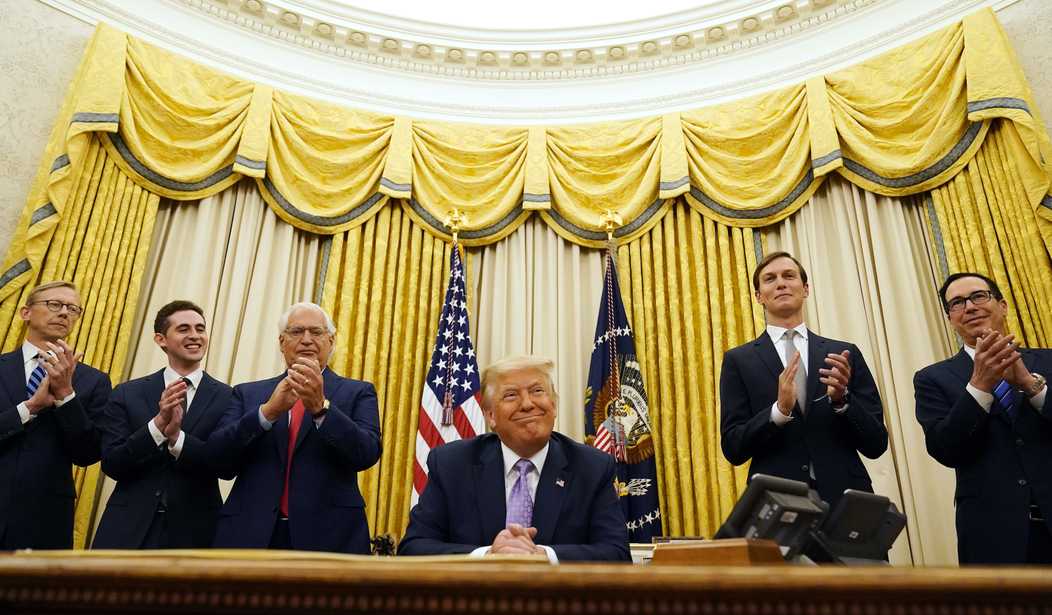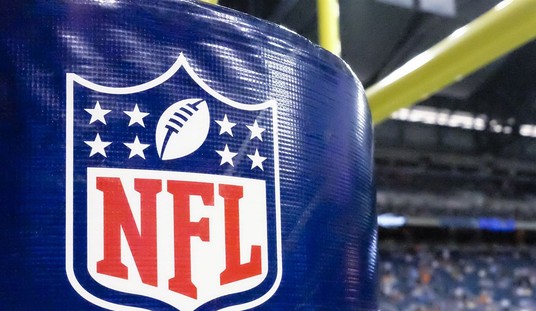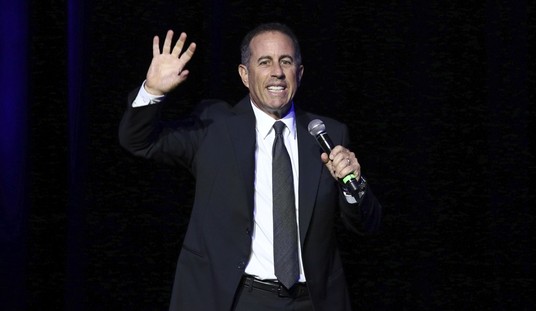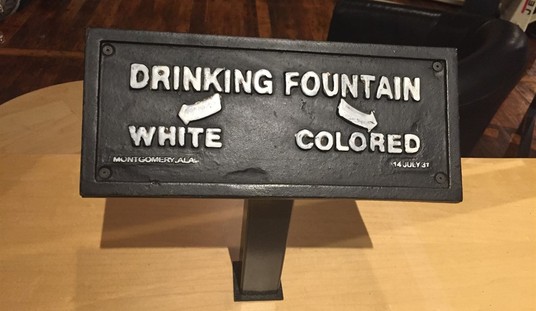Author's note: This is a condensed version of my study of presidential paradigms, which govern who wins the White House and who stays in the White House. I am writing a book on the subject, which will be more comprehensive and examine how other presidential paradigms played out.
The enduring popularity and impressive poll numbers of former President Donald J. Trump are attributed to many factors, including his personality, his policies, and the relentless buffoonery of incumbent President Joseph R. Biden Jr.
While those are valid reasons, the ultimate reason for Trump's success is that he is living in the moment; better put, his campaign is consistent with the ruling presidential paradigm, the Obama-Trump Presidential Paradigm.
The paradigm began with the 2008 election of Sen. Barack H. Obama Jr. (D.-Ill.) to the presidency, and it continues until it does not anymore. In this way, Trump is not only locked into this paradigm but, in his own way, shaping it.
One party or another has dominated each paradigm in the past, but Obama-Trump is still up for grabs, and the 2024 cycle may be the deciding factor.
In the four presidential elections held during the Obama-Trump paradigm, the score is relatively close, with Democrats winning 1,230 electoral votes and 103 states and Republicans winning 915 electoral votes and 103 states.
These presidential paradigms are how the American political system expresses dynastism. In some ways, familial and in other ways meritorious, but always in the context of three shared understandings: the historical narrative we accept, the lessons learned from that narrative, and the path forward to which those lessons point us.
Presidential paradigms offer a dominant political regime, but as a new paradigm emerges, adherents of the previous paradigm do not just disappear. Instead, these diehards become the opposition in the new paradigm.
Before the Obama-Trump paradigm, presidential politics were governed by the Nixon-Reagan Presidential Paradigm,1968-2008; before that, it was the FDR-JFK Presidential Paradigm, 1932-1968.
Paradigm party dominance v. old paradigm die-hards
The FDR-JFK paradigm was a time of Democratic dominance. In the nine presidential elections, Democrats won 3,121 electoral votes and 273 states, compared to 1,607 electoral votes and 158 states for the Republicans.
During the Nixon-Reagan paradigm, it was a time of Republican dominance. In 10 presidential elections, Republicans won 3,385 electoral votes and 339 states, compared with 1,944 electoral votes and 166 states won by Democrats.
Four times under Nixon-Reagan, Republicans won 40 or more states: 1972, 1980, 1984, and 1988. Democrats never reached 40 under Nixon-Reagan.
It is completely understandable why so many Republicans refuse to accept that Nixon-Reagan is over.
When these paradigms end, there is no turning back, but for those from both parties who prospered under the old order, it isn't easy to let go. These diehards continue to try to turn back the clock.
In the Nixon-Reagan paradigm, FDR-JFK die-hards, both Republican and Democrat, waged insurgencies against presidents aligned with the paradigm, successfully against President Richard M. Nixon and unsuccessfully against President Ronald W. Reagan.

The Watergate scandal that brought down Nixon was supposed to mean the end of the Republican Party and the end of Nixon's New Federalism and other reforms. What happened is that six years after Nixon resigned from his office, Reagan won 44 states to President James E. “Jimmy” Carter's seven states, and the former California governor won 489 electoral votes to Carter's 49 electoral votes.
Reagan then advanced Nixon's unfinished magisterium, and there were so many former Nixon staffers and cabinet officers working for Reagan that when Democrats tried to impeach him over the Iran-Contra Scandal, they recognized it and dismantled it before it got serious.
In the cases of presidents Carter and George H.W. Bush, their administrations were done in by diehards inside and outside the administrations who redirected these presidents into private lives.
Contrast the experience of Carter and Bush with that of President William J. Clinton. Clinton prospered in a paradigm dominated by the Republican Party. Clinton called himself a “New Democrat,” and he rejected the big government solutions of the FDR-JFK paradigm.
In the Obama-Trump paradigm, the diehards call themselves “Never Trumpers” or “true conservatives,” but their actual political program is nostalgia.
Florida Republican Gov. Ronald D. DeSantis and former South Carolina governor N. Nikki Haley learned the hard way in the 2024 cycle that there is no lane for Nixon-Reagan diehards, because as long as a paradigm holds, a candidate cannot successfully run contra-paradigm.
Significantly, both DeSantis and Haley spoke at the Reagan Presidential Library, hosted by the Ronald Reagan Presidential Foundation. Both candidates enjoyed the backing of the Murdoch media empire, including in The New York Post, The Wall Street Journal and Fox News — and from the Koch Brothers, through their advocacy group, Americans for Prosperity.
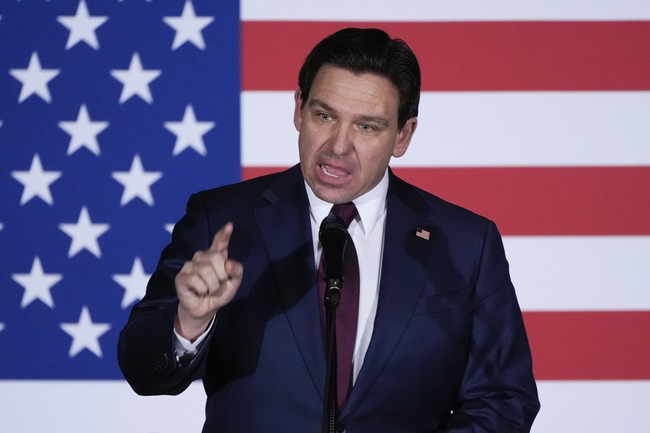
None of that helped them overturn Obama-Trump and restore Nixon-Reagan.
Galling to Trump and his campaign staffers and supporters, both DeSantis and Haley, who had national profiles on their own, were boosted by the president, and until they were clearly running against him, he was complimentary towards them.
Even on policy, there were not hard and fast disagreements that would have justified a primary challenge to the Republican Party's titular leader. The problem is that Republicans like DeSantis and Haley, just like Sen. W. Mitt Romney (R.-Utah), former speaker Paul D. Ryan, former vice president Michael R. Pence and a host of others, cannot accept that the Nixon-Reagan paradigm is over.
These Republicans campaigned against Obama and flailed against his policies virtually without effect. These Nixon-Reagan diehards want the restoration of the old order, but this restoration was spoiled by Trump, who instead of embracing neo-Reaganism — no one talks about Nixon —he reversed key parts of the Reagan program.
The other side of the coin was in 2016, when former first lady Hillary R. Clinton, whose husband, former President William J. Clinton, thrived in the Nixon-Reagan paradigm as a New Democrat, promised the voters the same return to the old days that McCain and Romney offered. The voters were not going back.
When a presidential paradigm ends shared understandings change, and the old paradigm becomes worthless, like a broken toy.
Nixon-Reagan diehard Ryan torches GOP's largest majority in four generations
It is beyond the scope of this piece, but in presidential years, the House races are tied to the success of their party's nominee.
Ryan was so hostile to Trump and the new paradigm that he worked to decouple House Republicans from Trump in 2016 — literally launching a parallel campaign called “The Better Way Agenda” with separate themes and no interaction with the Trump campaign.
Of course, Ryan had run on the 2012 ticket with Romney, so it was no surprise when the two men sat on stage at the March 22, 2016, National Republican Congressional Committee’s annual fundraising dinner.
Ryan played the straight man, setting Romney's one-liners. The most memorable was when Romney quipped: "Donald Trump has had several foreign wives. It turns out that there really are jobs Americans won’t do.”
Mitt Romney at @NRCC dinner: "Donald Trump has had several foreign wives. It turns out that there are really are jobs Americans won't do."
— Kris Hammond (@KrisHammond) March 23, 2016
The result was that House Republicans lost six seats, taking them from 247 to 241. What is significant is that the 247 total was the largest Republican House Majority going back to 1928, when Commerce Secretary Herbert C. Hoover won 444 electoral votes and 40 states against New York Democrat Gov. Alfred E. Smith’s 87 electoral votes and eight states.
In that election, House Republicans won 270 House seats to Democrats winning 164 votes. Unfortunately for Hoover and the Republicans, it was the end of the Harding-Coolidge Presidential Paradigm after just 12 years.
Ryan was a thorn in his side for the first two years of Trump's term. He botched the repeal-and-replace of the Patient Protection and Affordable Care Act by shelving the 2015 bill every GOP congressman and senator had voted for, and he replaced it with a bill his staff wrote with the insurance lobbyists.
In April 2018, Ryan announced he would not seek a new term, but he did not resign as speaker, so no one was really in charge, and no one could make a move as long as Ryan was the top decision-maker and fundraiser.
During that cycle, Republicans lost 41 seats, and their majority was gone. Remarkably, Ryan and the House Republican leadership left 40 House Democrats without a GOP opponent. Essentially, Ryan took the dive as if to ensure Democrats could block Trump's agenda and eventually impeach him.
With Trump on top of the ticket in 2020, House Republicans flipped 13 seats and won 213 seats to the 222 won by House Democrats.
Ways the Obama-Trump Presidential Paradigm is different from Nixon-Reagan
For eight years, Obama ran circles around Republicans, who kept going back to the old, tired playbook, so much so that it looked like the two sides were not operating in the same system—and they were not.
Presidential paradigms are like planes of consciousness. Think about it like when the aunts and uncles are talking in a room, and one of the nieces or nephews walks in. Immediately, without a signal and without pause, the aunts and uncles switch the conversation. Just like what happens when the cousins are talking in a room, and an aunt or uncle walks in.
Now, consider what happens when establishment Republicans are talking and Trump walks into the room. They could agree on every issue, but Trump is the man at the moment, and they are the diehards, like Japanese soldiers still in the jungle waiting for orders into the 1970s.
In 2012, Romney campaigned like Obama was an aberration, just a bump in the road. Obama dismissed him as a relic of a bygone age, as he had done with Sen. John S. McCain III (R.-Ariz.) in 2008.
After 2008, no one wanted to hear about a “shining city on a hill.”
Maybe it was the Iraq War, maybe it was the simultaneous collapse of the banking, real estate, and auto industries, but for whatever reason, the accepted wisdom was not workable anymore.
While the central theme of the Nixon-Reagan paradigm was the need to decentralize power away from Washington, in the Obama-Trump paradigm, it is the acceptance of centralized power in Washington with the fight shifting to control that centralized power.
In the Nixon-Reagan paradigm, Republicans resisted putting their thumbs on the scale in their favor because it was against the mores of the paradigm. In the Obama-Trump paradigm, Republicans recognized how many colleges, institutions, agencies, and media outlets have been captured by the left, and the battle is on to liberate them — what the Spanish called "Reconquista."
"Build your own Google" is no longer taken seriously. Now, the view is that Google was built by the federal government, and it must be brought to heel.
Obama ushered in a new personal style of politics, eschewing the conceptual-speak of the previous paradigm. He also practiced a form of brinksmanship Republicans were not ready to engage.
What Trump brought to the paradigm was a reshuffling of the ideological deck.
Under Trump’s leadership, the Republican Party no longer supported transferring the American industrial base to China, loose immigration rules and enforcement, managed trade deals, and the slavish obedience to the U.S. Chamber of Commerce.
More than anything else, Trump ended the GOP’s support for a robust and adventurous foreign policy. Trump did not defend the Iraq War; he validated Obama’s view that it was a costly mistake.
Whereas McCain and Romney had been Russia hawks, Obama worked with Russia — in fact, it was his first foreign trip as president, conducted at the same time Vice President Joseph R. Biden Jr. went to Ukraine.
Consistent with the current paradigm, Biden scored no long-term damage from his exit from Afghanistan, which was messy and humiliating. Two-and-a-half years later, people are still bothered by the way it was handled, but everyone is glad we are out. In this way, Biden’s withdrawal from Afghanistan was a foreign policy success.
It is not so with Biden’s entanglements in the Battle of Ukraine. Unlike Obama, who ignored the commitments United States made to the government in Kiev in the 1994 Budapest Memorandum, Biden has gone as far as he can without committed U.S. troops. Thanks to Biden, the government in Kiev has benefitted from American intelligence and targeting, equipment and training.
The battle over more funding for Ukraine on Capitol Hill should signal Biden that he is working contra-paradigm, given the resistance, where there was little or no resistance in the months after the Feb. 24, 2022, insertion of Russian troops.
In the Nixon-Reagan paradigm, racing to support a country under attack would have been the right call politically, but not under Obama-Trump.
The correct call for Biden is to tap the brakes in Ukraine and acknowledge it has become intractable. Then, pivot to embrace the president's decision to get out of Afghanistan, which was heartbreaking, humiliating and criminally irresponsible — but, so aligned with the paradigm that voters will appreciate that in the end, the U.S. is out of Afghanistan, and an unfortunate overseas project shut down.
How the Obama-Trump paradigm plays out in 2024
In November, Trump triumphs over Biden because he is aligned with the Obama-Trump paradigm, and because Biden's loose immigration policies, such as his decision to block the deportation of 6,000 Palestinians and his foreign adventurism in Ukraine are out-of-step with the times.
Many — really too many — people have made the point that Reagan would be rolling over in his grave with the news that Republicans were not supporting Ukraine against the Russians.
Ronald Reagan is rolling over in his grave knowing there are Republicans who think America shouldn't stand up to Russia.
— Will Hurd (@WillHurd) December 21, 2022
Obviously, Reagan’s problem was not with Russians but with International Communism directed by the Soviet regime running Russia, so the rhetoric fails, but it does raise a point about the presidential paradigms.
One man who struggled with the transition into a new era was Boston Celtics Head Coach Richard A. Pitino. At his March 1, 2000, press conference, the coach told the hostile reporters what they did not want to hear.
“Larry Bird is not walking through that door, fans,” Pitino said. “Kevin McHale is not walking through that door, and Robert Parish is not walking through that door — and if you expect them to walk through that door, they’re going to be gray and old.”
Happy Not Walking Thru That Door Day if you are observing it.
— Boston Radio Watch®️ (@bostonradio) March 1, 2023
23 years ago tonight, March 1, 2000, Rick Pitino reminded all Boston Celtics fans everywhere that Larry Bird, Robert Parish and Kevin McHale are not walking thru that door.
(🎥 : @boston25)
pic.twitter.com/PwTBv9Bdcq
In the Obama-Trump paradigm, too many Republicans are waiting for Reagan to walk through that door — and he ain’t.
Suppose this turns out to be a period dominated by Republicans. In that case, Biden can still prosper, like non-dominant party presidents Clinton or Dwight D. Eisenhower did by channeling his two predecessors.
That now seems unlikely as the president’s handlers, while Democrats, are themselves Nixon-Reagan die-hards, a source of tension in the Obama administration, and perhaps one of the reasons Obama did not back Biden to succeed him in 2016.

